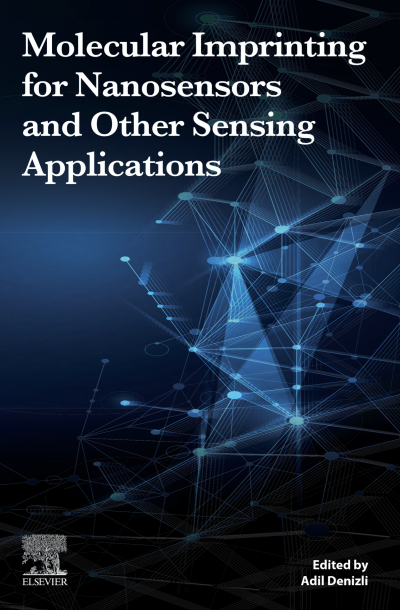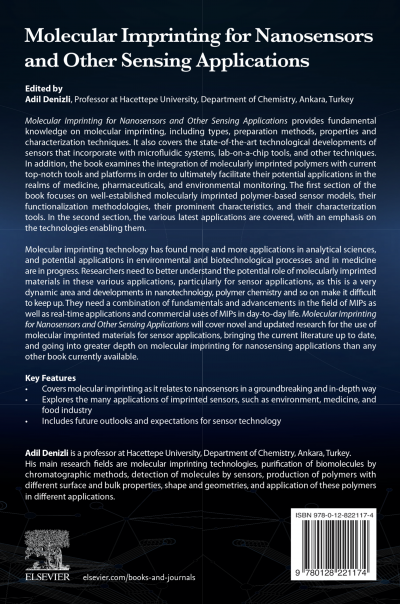New Book by Adil Denizli, "Molecular Imprinting for Nanosensors and Other Sensing Applications" Published
We present the new book by Dr. Adil Denizli, titled "Molecular Imprinting for Nanosensors and Other Sensing Applications" has been published by Elsevier.
From the Back Cover
Molecular Imprinting for Nanosensors and Other Sensing Applications provides fundamental knowledge on molecular imprinting, including types, preparation methods, properties and characterization techniques. It also covers the state-of-the-art technological developments of sensors that incorporate with microfluidic systems, lab-on-a-chlp tools, and other techniques. In addition, the book examines the integration of molecularly imprinted polymers with current top-notch tools and platforms in order to ultimately facilitate their potential applications in the realms of medicine, pharmaceuticals, and environmental monitoring. The first section of the book focuses on well-established molecularly imprinted polymer-based sensor models, their functionalization methodologies, their prominent characteristics, and their characterization the technologies enabling them.
Molecular imprinting technology has found more and more applications in analytical sciences, and potential applications in environmental and biotechnological processes and in medicine are in progress. Researchers need to better understand the potential role of molecularly imprinted materials in these various applications, particularly for sensor applications, as this is a very dynamic area and developments in nanotechnolcgy, polymer chemistry and so on make it difficult to keep up. They need a combination of fundamentals and advancements in the field of MIPs as well as real-time applications and commercial uses of MIPs in day-to-day life. Molecular Imprinting for Nanosensors and Other Sensing Applications will cover novel and updated research for the use of molecular imprinted materials for sensor applications, bringing the current literature up to date, and going into greater depth on molecular imprinting for nanosensing applications than any other book currently available.
Key Features
- Covers molecular imprinting as it relates to nanosensors in a groundbreaking and in-depth way
- Explores the many applications of imprinted sensors, such as environment, medicine, and food industry
- Includes future outlooks and expectations for sensor technology
Adil Denizli is a professor at Hacettepe University, Department of Chemistry, Ankara, Turkey.
His main research fields are molecular imprinting technologies, purification of biomolecules by chromatographjc methods, detection of molecules by sensors, production of polymers with different surface and bulk properties, shape and geometries, and application of these polymers in different applications.

